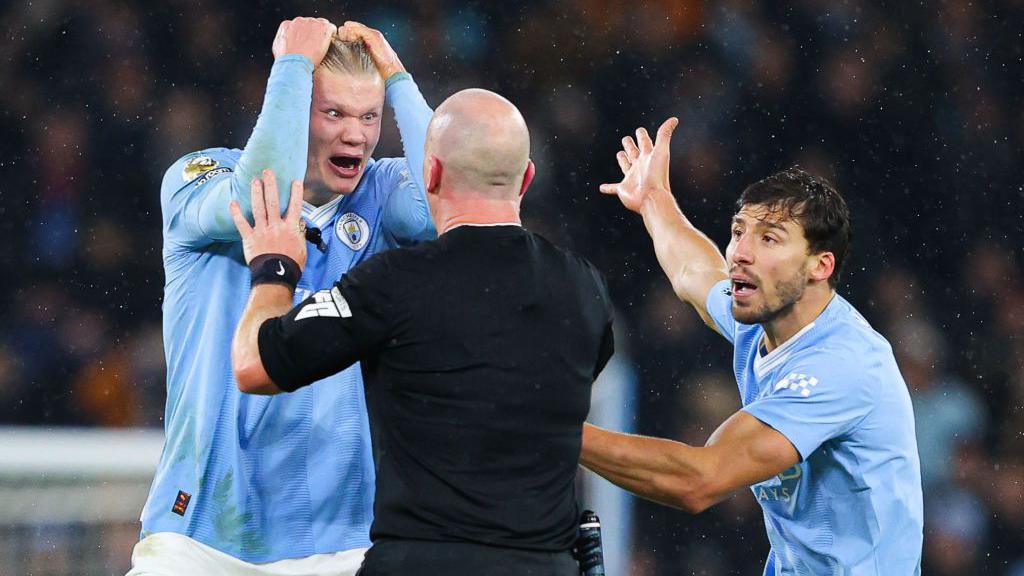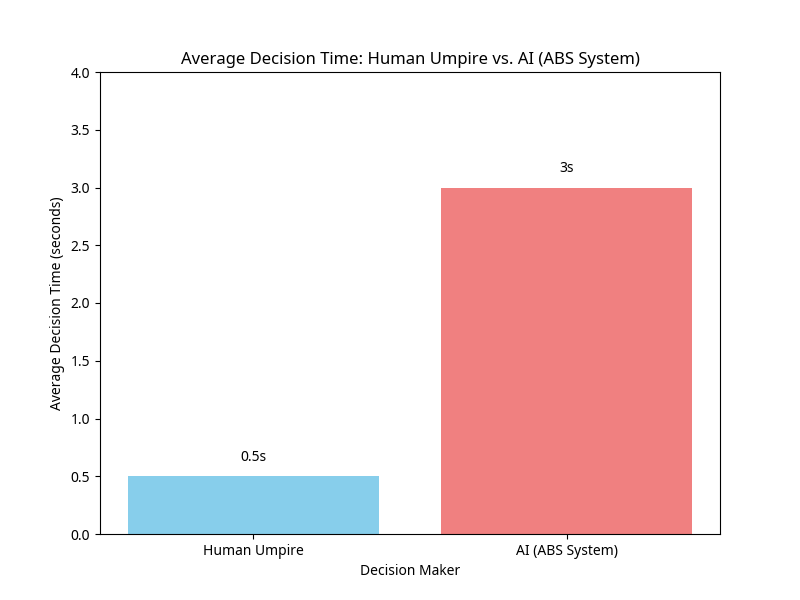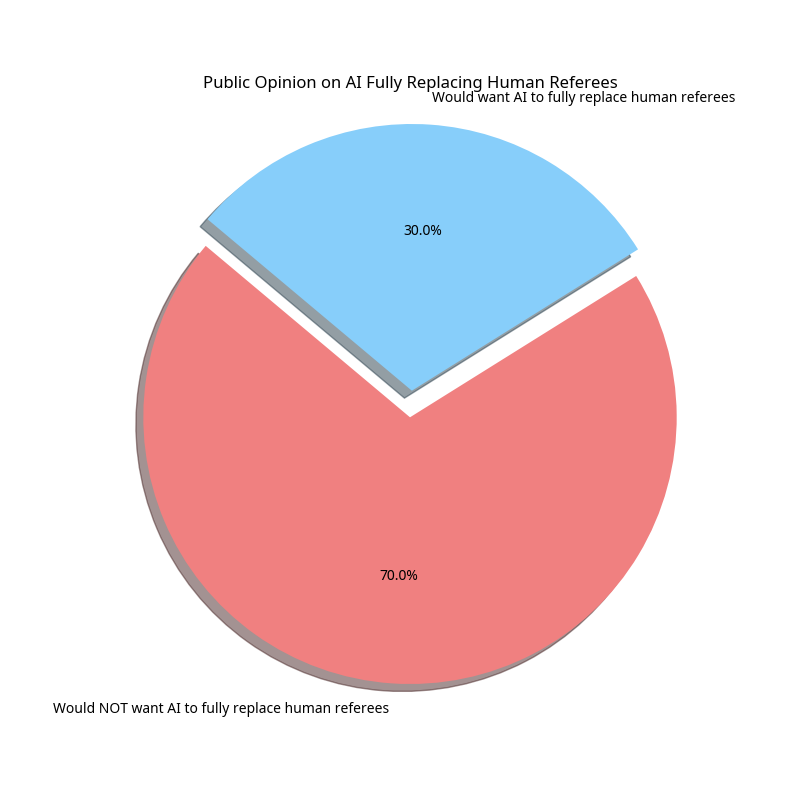
The Unfolding Drama of Technology and Tradition in Officiating
In professional sports, every call, every decision, and every moment of judgment can swing the pendulum from victory to defeat, etching indelible memories into the annals of history. For decades, these critical moments have rested squarely on the shoulders of human officials—referees, umpires, and judges whose subjective interpretations and fallible perceptions have been as much a part of the game’s fabric as the athletes themselves.
Yet, as artificial intelligence (AI) rapidly advances, offering unprecedented levels of accuracy and efficiency, a profound question emerges: Where do we draw the line between the precision of machines and the irreplaceable human element that defines the spirit of competition?
This case study delves into the heart of this compelling debate, exploring the transformative impact of AI on sports officiating, the inherent challenges and limitations of both human and artificial intelligence, and the ethical considerations that arise as technology seeks to perfect the imperfect. From the controversial calls that have sparked global outrage to the seamless integration of AI in behind-the-scenes analytics, we will examine the delicate balance required to harness AI’s potential without eroding the very essence of what makes sports so captivating.
The Human Factor: A Legacy of Brilliance and Blunder
For generations, the human official has been the ultimate arbiter of justice on the field, court, or pitch. Their presence brings an undeniable human touch, an ability to interpret the nuances of play, assess intent, and manage the emotional intensity of a game. This human element, with its capacity for empathy and understanding, is often cited as crucial to maintaining the flow and integrity of competition. However, this reliance on human judgment also comes with an inherent vulnerability: error.
Controversial calls, often born from split-second decisions in high-pressure environments, have become legendary—and sometimes infamous—moments in sports history. These blunders, whether due to obstructed views, rapid-fire action, or simple misjudgment, have not only altered game outcomes but have also ignited passionate debates among fans, players, and pundits alike.
The “Hand of God” goal by Diego Maradona in the 1986 World Cup, where a clear handball was missed by the referee, remains one of the most talked-about incidents in football history [1]. Similarly, the non-call on pass interference in the 2019 NFC Championship game directly impacted the outcome of a pivotal NFL playoff match, leading to widespread outcry and calls for greater accountability [2].
In baseball, countless umpire decisions have shaped the course of games, showcasing the undeniable impact of the human factor [3]. These examples underscore the fundamental challenge: while human officials bring invaluable subjective judgment, their fallibility can lead to significant and often game-altering mistakes.
The Rise of the Machines: AI Enters the Arena
In response to the persistent challenge of human error, sports leagues and organizations have increasingly turned to technology to enhance the accuracy and fairness of officiating. The journey began with relatively simple innovations like instant replay, but the advent of sophisticated AI and machine learning has ushered in a new era of technological intervention. Today, AI-powered systems are no longer a futuristic concept; they are actively being deployed across a range of sports, fundamentally reshaping the role of the official.
One of the most prominent examples of AI in action is the Hawk-Eye system, which has revolutionized sports like tennis and cricket. By using a network of high-speed cameras to track the trajectory of the ball with millimeter accuracy, Hawk-Eye can definitively determine whether a ball is in or out, a task that has historically been a major source of contention. The system’s success has been so profound that, by 2025, the ATP Tour will eliminate human line judges entirely, a move that speaks volumes about the trust placed in this technology [4].
In soccer, Video Assistant Referee (VAR) and goal-line technology have become integral parts of the game. Goal-line technology, another application of the Hawk-Eye system, provides an instantaneous and definitive answer to whether the ball has crossed the goal line, eliminating the “phantom goal” controversies that have plagued the sport for decades. VAR, while more complex and often more controversial, allows a team of officials to review key incidents with the aid of multiple camera angles and slow-motion replays, providing a safety net for on-field referees.
Baseball is also experimenting with AI through the Automated Ball-Strike (ABS) system, which is currently being tested in the minor leagues. This system uses motion-capture and AI algorithms to determine whether a pitch is a ball or a strike with a level of consistency that is theoretically impossible for a human umpire to replicate [4]. In basketball, the NBA is using AI for everything from real-time player tracking and shot analysis to assisting with goaltending reviews [4].
These technologies, and others like them, are driven by a common goal: to minimize human error and ensure that the outcome of a game is determined by the skill of the athletes, not the mistake of an official. The appeal of AI is its impartiality, its ability to make decisions based on data and algorithms, free from the emotional pressures and cognitive biases that can affect human judgment.
As these systems become more sophisticated and more widely adopted, they are not only changing the way games are officiated but are also raising fundamental questions about the future of sports and the role of humans within it.
The Unforeseen Challenges: When AI Stumbles
While the promise of AI in sports officiating is compelling, its implementation has not been without its challenges and limitations. The pursuit of perfect accuracy often encounters the messy reality of real-world application, revealing that even the most advanced algorithms can stumble.
One of the primary hurdles for AI in fast-paced sports is processing speed. As highlighted by Meredith Wills, a sports data scientist at SMT (SportsMEDIA Technology), AI systems can sometimes “spin their wheels” when faced with complex calculations, leading to delays that disrupt the flow of the game.
For instance, while a human umpire can call a ball or strike in less than a second, the automated ball-strike system (ABS) can take multiple seconds for tougher decisions. These delays have been significant enough that Minor League umpires using ABS in trials have been given discretion to abandon the system if it interferes with the pace of play [4].

Figure 1: Average Decision Time: Human Umpire vs. AI (ABS System)

Another significant challenge lies in visual distractions and environmental complexities. AI algorithms rely on clear visual data, but sports environments are often chaotic. On a basketball court, for example, tracking a ball amidst ten moving players and their limbs presents a complex problem for computer vision. Factors like changing lighting conditions, background colors, and even spectator movements can “throw off” the computer’s calculations, leading to mis-identifications (e.g., mistaking a hat for the ball) and inaccurate tracking [4].
Furthermore, the integration of AI does not always eliminate human error; sometimes, it merely shifts its location or introduces new forms of it. In hybrid systems like VAR, where a human operator reviews video footage and a referee makes the final decision, human perception can still introduce inaccuracies. Pooya Soltani, who studies games technology at Staffordshire University, found that even when viewing the same replay angles used by officials, respondents perceived the ball being kicked 132 milliseconds later than it actually was.
This seemingly small delay can result in considerable errors in high-speed scenarios, demonstrating that the “interpretation of these close calls tends to be subjective, and human perception may introduce errors in judgment” [4]. Even at Wimbledon, where electronic systems have replaced human line judges, a “human error” was blamed for a glaring mistake by the electronic system, underscoring that human oversight, even of technology, can still be a source of flaws [5].
Beyond technical limitations, the increasing reliance on AI in sports officiating raises critical ethical considerations:
- Monetary Consequences: As sports betting becomes more integrated with real-time game data, inaccuracies in AI outputs could have significant financial repercussions for bettors and sportsbooks [4].
- Manipulation and Integrity: Concerns have been raised that if AI systems were to fully supplant human referees, sports governing bodies could potentially manipulate these systems, increasing the likelihood of match-fixing [6]. This strikes at the very heart of sports integrity.
- Loss of Human Element: Many argue that the human element, with its capacity for empathy, judgment, and the ability to manage the emotional dynamics of a game, is integral to the spirit of sports. A complete shift to AI could strip away this essential component, making games feel sterile or overly clinical.
- **R- *Public Opinion*: There is often a natural resistance to technological change, particularly when it threatens established roles or traditions. Players, coaches, and fans may struggle to accept decisions made by an impersonal machine, leading to distrust and alienation. A survey by Sweat Magazine showed that over 70% of participants would NOT want human referees fully replaced by AI [7].


Figure 2: Public Opinion on AI Fully Replacing Human Referees
These challenges highlight that AI is not a panacea for all officiating woes. Its deployment requires careful consideration of its technical limitations, the potential for new forms of error, and the broader ethical and human implications.
Striking the Balance: The Future of Human-AI Collaboration
Given the complexities and challenges, the question is not whether AI should be used in sports officiating, but rather how it can be integrated effectively and ethically. The emerging consensus among experts and stakeholders is that the future lies not in the wholesale replacement of human officials, but in a collaborative model where AI serves as a powerful tool to aid and enhance human decision-making.
Pooya Soltani succinctly articulates this philosophy: “I believe the technology should be utilized as a tool to aid the decision-making process and not [replace] it” [4]. This perspective suggests a future where AI provides objective data and precise measurements, allowing human officials to focus on the more nuanced aspects of the game, such as assessing intent, managing player conduct, and maintaining the flow of play.
For example, AI could definitively determine whether a ball is in or out, while a human referee could interpret the context of a foul or manage player interactions.
This collaborative approach offers several benefits:
- Enhanced Accuracy: AI can handle the objective, measurable aspects of officiating with unparalleled precision, reducing the incidence of clear and obvious errors.
- Preservation of the Human Element: Human officials retain their crucial role in interpreting subjective situations, applying the spirit of the rules, and managing the emotional landscape of the game.
- Improved Consistency: AI can help standardize calls on objective matters, leading to greater consistency across games and leagues.
- Faster Decision-Making: In some cases, AI can provide instant feedback, allowing for quicker and more efficient decision-making, particularly for factual calls.
However, achieving this balance requires ongoing dialogue and adaptation. Sports organizations must invest in training and education to equip officials with the skills to effectively leverage AI tools without undermining their intuitive decision-making abilities or fostering over-reliance on technology. Transparency in how AI is used and how decisions are made is also crucial to building trust among fans and participants.
Ultimately, the goal is to create a fairer, more accurate, and more engaging sports experience. This means embracing the technological advancements that AI offers while steadfastly preserving the human drama, passion, and subjective judgment that have always been at the heart of athletic competition.
The line between human and AI in sports officiating is not a fixed boundary but a dynamic frontier, constantly evolving as technology advances and our understanding of the game deepens. The challenge, and the opportunity, lies in finding the optimal synergy that elevates sports to new heights without sacrificing its soul.
Conclusion: The Evolving Symphony of Sport
The integration of AI into sports officiating is not merely a technological upgrade; it is a profound evolution in the very nature of how games are played, judged, and experienced. While the allure of perfect, unbiased accuracy offered by AI is undeniable, the journey has revealed that the human element, with its capacity for nuanced judgment, emotional intelligence, and the occasional, dramatic flaw, remains an indispensable component of sports’ enduring appeal.
The debate between human and AI decision-making is not a zero-sum game, but rather an opportunity to forge a new paradigm—one where the precision of machines complements the wisdom and intuition of human officials.
The path forward is one of careful calibration, continuous learning, and open dialogue. It demands that sports organizations, technologists, athletes, and fans collectively define where the line should be drawn, ensuring that AI serves as an enabler of fairness and excitement, rather than an inhibitor of the human drama that makes sports so universally beloved.
As AI continues to advance, the symphony of sport will undoubtedly evolve, blending the objective harmony of algorithms with the subjective, passionate melodies of human endeavor, creating a richer, more compelling experience for generations to come.
References
[1] “Top 10 Most Infamous Referee Blunders in World Football History.” Refr Sports, 14 Apr. 2024, refrsports.com/blog/top-10-most-infamous-referee-blunders-in-world-football-history.
[2] “10 most controversial calls in NFL history.” GiveMeSport, 6 Nov. 2023, www.givemesport.com/10-worst-officiating-disasters-of-all-time/.
[3] “MLB’s Most Controversial Umpire Calls: How Human Factors Affect…” LWOSports, 27 Dec. 2024, lwosports.com/mlbs-most-controversial-umpire-calls/.
[4] Dowsett, Ben, and Allison Parshall. “AI Is Helping Referee Games in Major Sports Leagues, but Limitations Remain.” Scientific American, 2 May 2024, www.scientificamerican.com/article/ai-is-helping-referee-games-in-major-sports-leagues-but-limitations-remain/.
[5] “Wimbledon blames human error for glaring mistake by electronic…” PBS NewsHour, 7 July 2025, www.pbs.org/newshour/world/wimbledon-blames-human-error-for-glaring-mistake-by-electronic-system-that-replaced-officials.
[6] “Artificial Intelligence Referees: Offsides and Out of Bounds.” Vanderbilt Journal of Entertainment & Technology Law, 13 Nov. 2023, www.vanderbilt.edu/jetlaw/2023/11/13/artificial-intelligence-referees-offsides-and-out-of-bounds/.

Leave a Reply